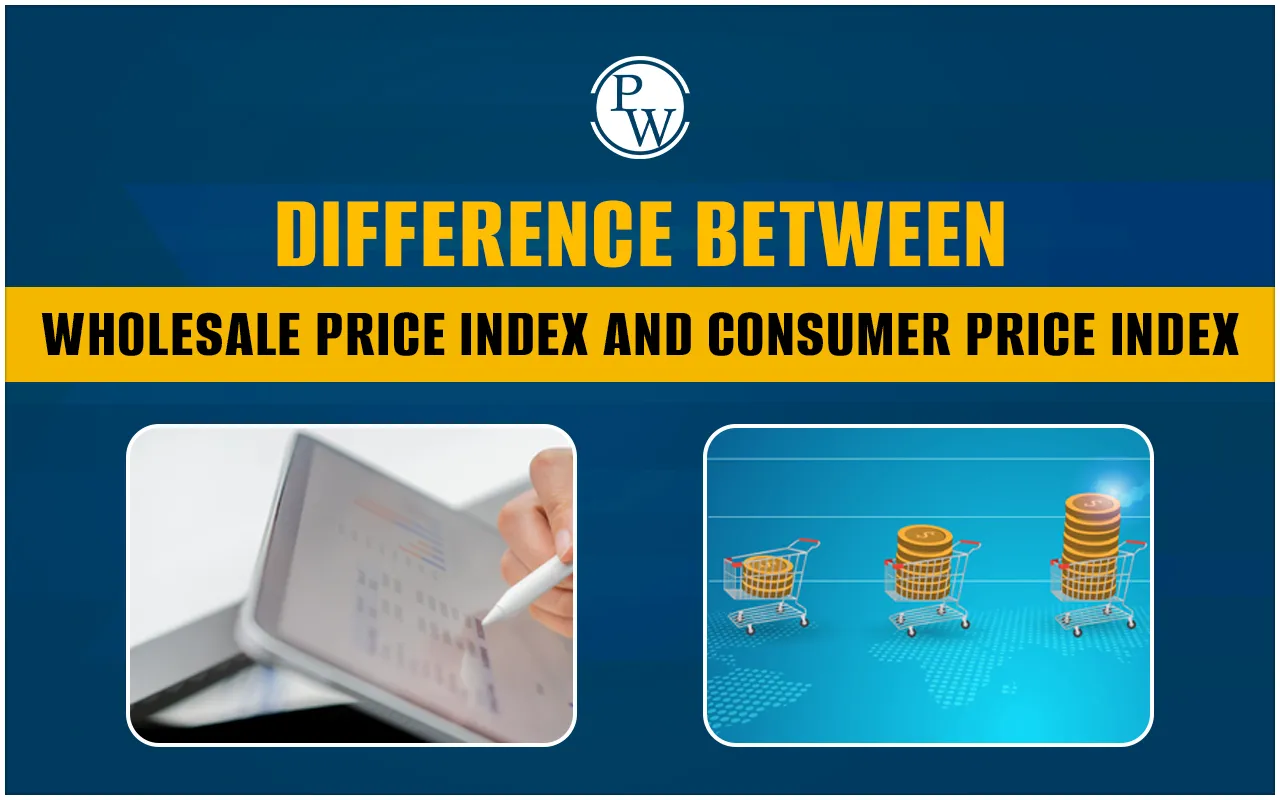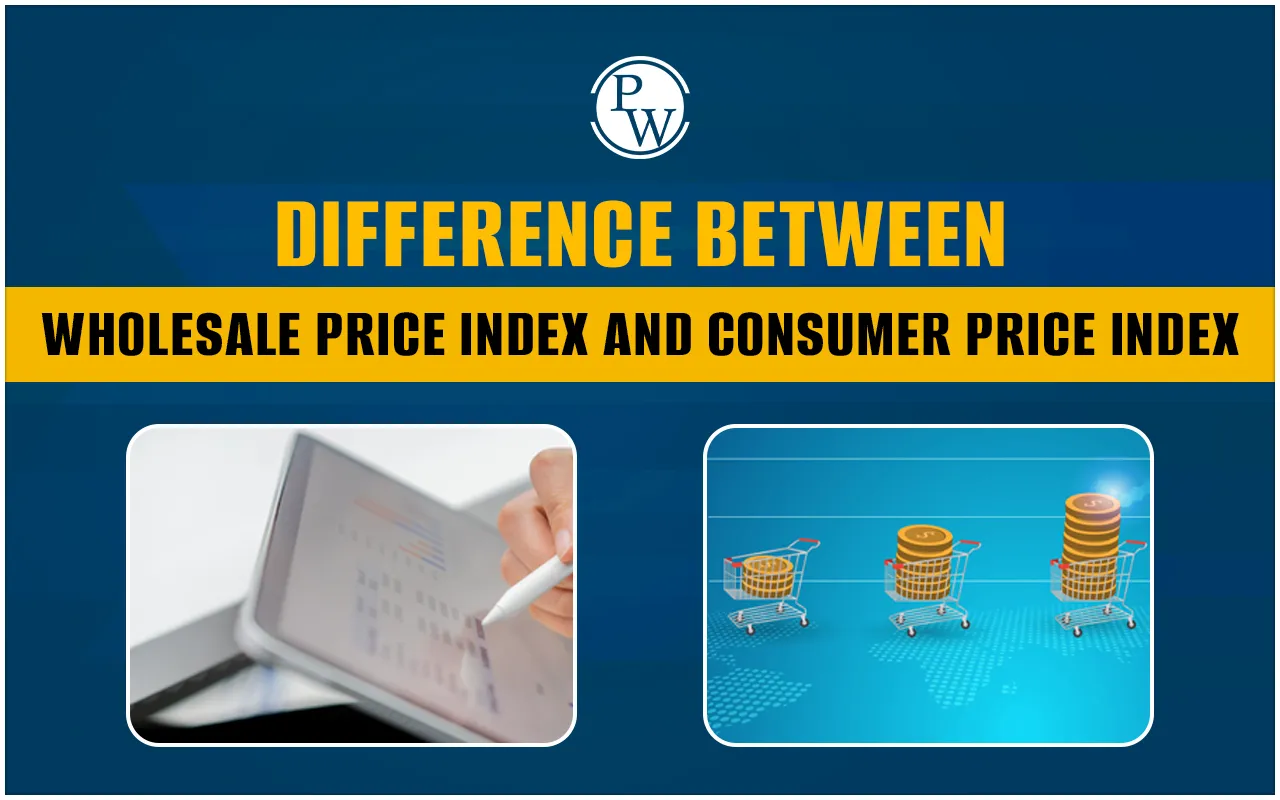

Inflation is a key economic indicator that affects every aspect of an economy, from policymaking to household budgets. Two crucial indices used to measure inflation are the Wholesale Price Index (WPI) and the Consumer Price Index (CPI). Understanding the Difference Between Wholesale Price Index and Consumer Price Index is essential for businesses, policymakers, and individuals. This article provides an in-depth comparison between these two indices, highlighting their definitions, methodologies, uses, and significance in economic analysis.
What is the Wholesale Price Index (WPI)?
The Wholesale Price Index (WPI) measures the average change in the price of goods at the wholesale level before they reach the consumer. It is a crucial indicator used to track inflation in bulk trading markets.
Key Features of WPI:
-
Measures Price Changes at the Wholesale Level: WPI tracks price movements of goods traded in bulk.
-
Excludes Services: Unlike CPI, WPI does not include services in its calculation.
-
Majorly Includes Manufacturing Goods: WPI focuses more on manufactured products, raw materials, and intermediate goods.
-
Base Year: The base year for WPI is periodically revised to ensure accurate measurement of inflation trends.
-
Not Consumer-Centric: Since WPI reflects wholesale prices, it does not directly impact end consumers.
What is the Consumer Price Index (CPI)?
The Consumer Price Index (CPI) measures the average change in the price of goods and services consumed by households. It serves as a key indicator of retail inflation and directly affects the cost of living.
Key Features of CPI:
-
Includes Goods and Services: CPI measures inflation for both products and essential services like healthcare, education, and transportation.
-
Focuses on Retail Prices: Unlike WPI, CPI reflects the price changes at the consumer level.
-
Direct Impact on Consumers: Since CPI measures the cost of living, it directly influences economic policies and salary adjustments.
-
Multiple Variants: CPI is divided into different categories, including CPI for Industrial Workers (CPI-IW), CPI for Agricultural Labourers (CPI-AL), and CPI for Rural and Urban areas.
Difference Between Wholesale Price Index and Consumer Price Index
Understanding the Difference Between Wholesale Price Index and Consumer Price Index is crucial to interpreting inflation trends accurately. Below is a comparative analysis:
| Difference Between Wholesale Price Index and Consumer Price Index | ||
| Feature | Wholesale Price Index (WPI) | Consumer Price Index (CPI) |
| Definition | Measures price changes at the wholesale level. | Measures price changes at the consumer level. |
| Scope | Focuses on wholesale goods, excluding services. | Covers both goods and services consumed by individuals. |
| Impact on Economy | Indicates inflation trends at the producer level. | Directly affects the purchasing power of consumers. |
| Relevance in Policy Making | Helps businesses and industries plan pricing strategies. | Used for adjusting wages, pensions, and formulating monetary policies. |
| Basket of Goods | Includes manufactured products, raw materials, and intermediate goods. | Includes consumer goods, essential services, and daily necessities. |
| Price Reference | Based on bulk trading prices. | Based on retail prices paid by consumers. |
Importance of Understanding the Difference Between Wholesale Price Index and Consumer Price Index
-
For Policymakers: Governments use CPI to make decisions on interest rates, taxation, and social security benefits, while WPI helps understand inflationary pressures at the industry level.
-
For Businesses: Companies track WPI to anticipate cost fluctuations in raw materials, while CPI helps them gauge consumer purchasing power.
-
For Investors: CPI and WPI influence stock markets, bond yields, and investment strategies.
-
For Consumers: Knowing CPI trends can help individuals plan their personal finances better.
Which Index is More Important?
While both indices are crucial, the Consumer Price Index (CPI) is more significant for consumers as it directly impacts the cost of living. The Wholesale Price Index (WPI), on the other hand, is vital for businesses and policymakers to assess industry trends.
The Difference Between Wholesale Price Index and Consumer Price Index lies in their measurement approaches, impact areas, and significance. WPI is used primarily for assessing wholesale market trends, while CPI is a direct measure of inflation affecting consumers. Both indices play a vital role in economic planning and decision-making, ensuring stability in markets and financial policies.
Understanding the Difference Between Wholesale Price Index and Consumer Price Index can help businesses, policymakers, and individuals make informed decisions. By keeping track of these indices, one can better navigate inflationary trends and plan financial strategies accordingly.
Join PW Commerce Online Course and unlock your potential with quality education and dedicated learning support.
Difference Between Wholesale Price Index and Consumer Price Index FAQ
What is the main Difference Between Wholesale Price Index and Consumer Price Index?
Why does the Reserve Bank of India (RBI) use CPI instead of WPI for monetary policy?
How does an increase in WPI affect CPI?













